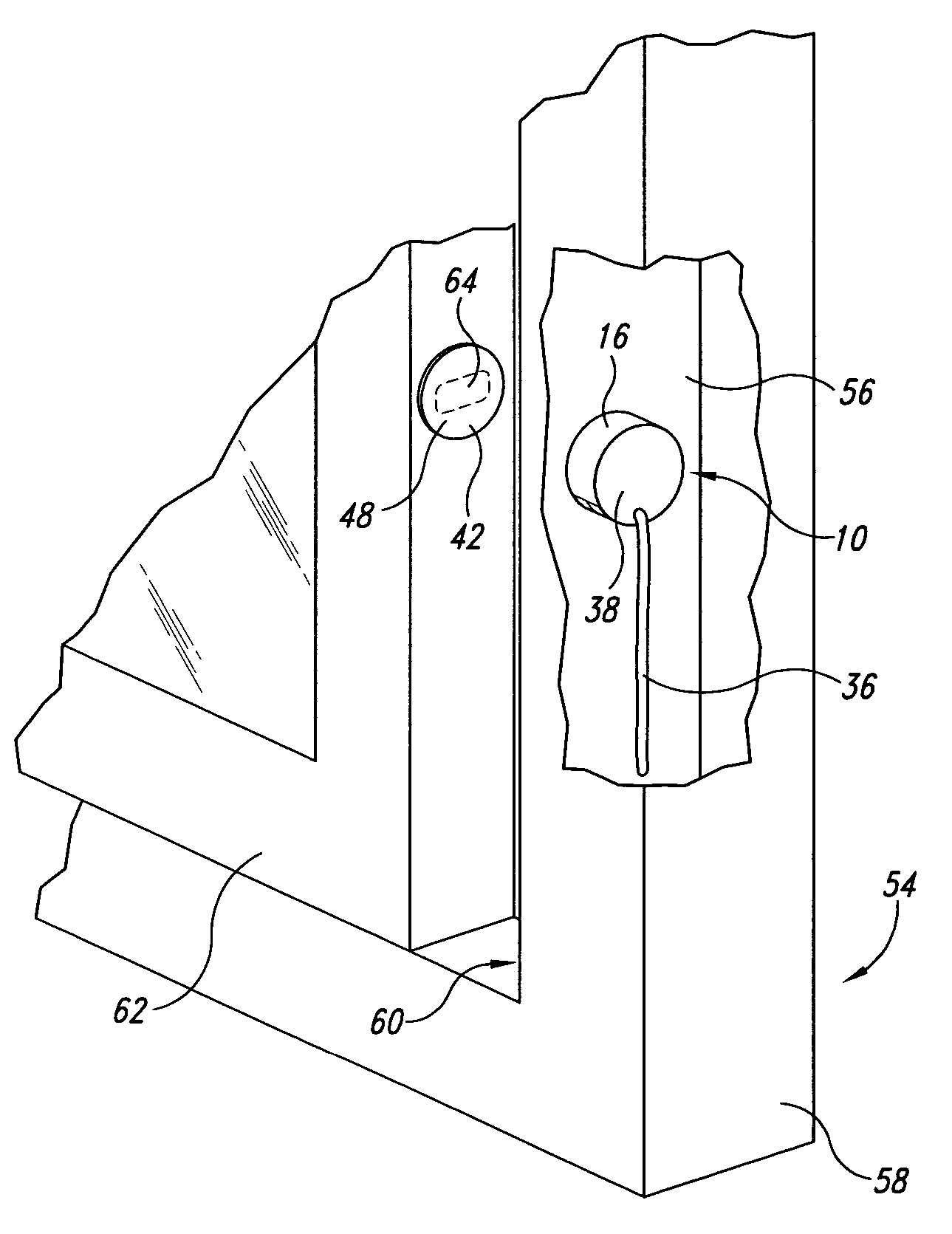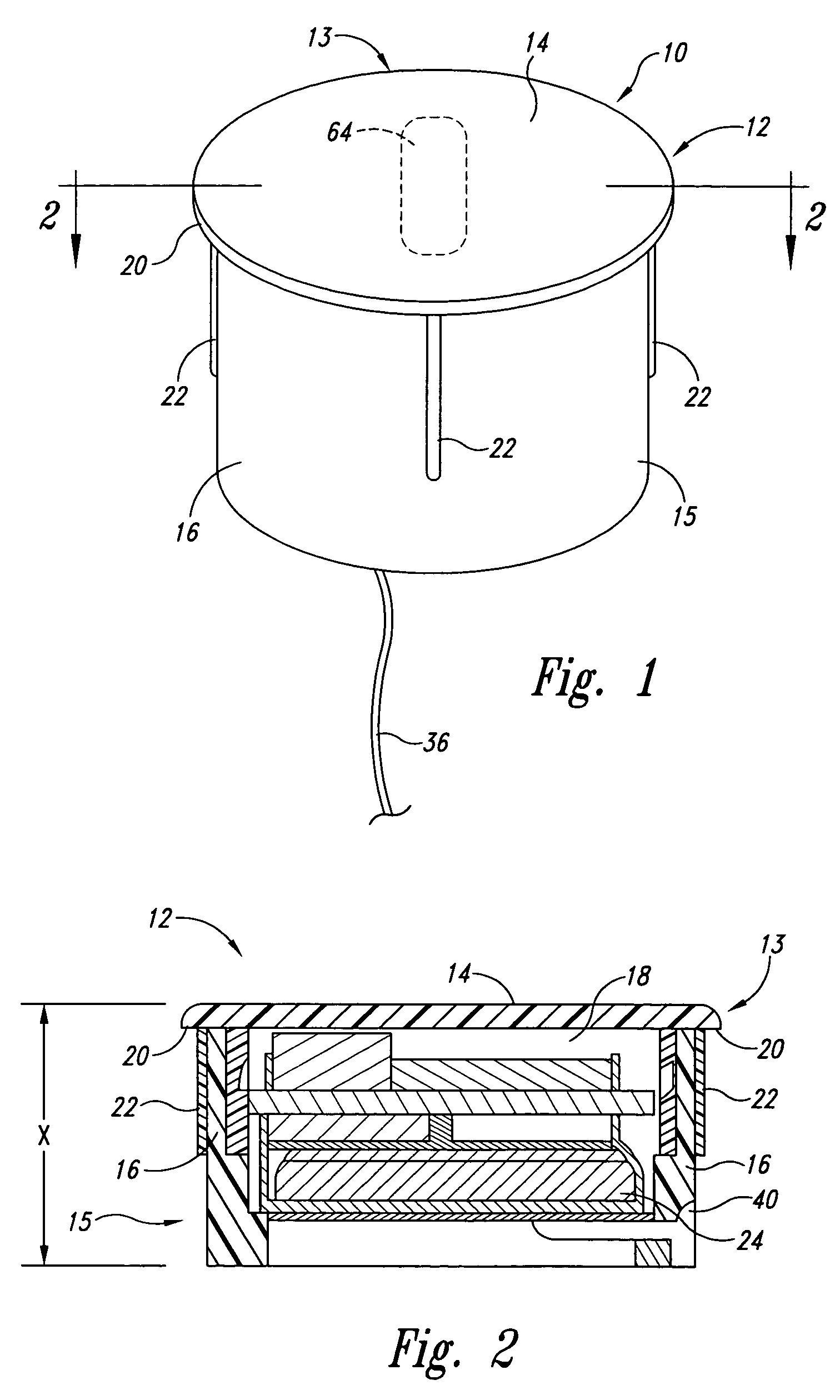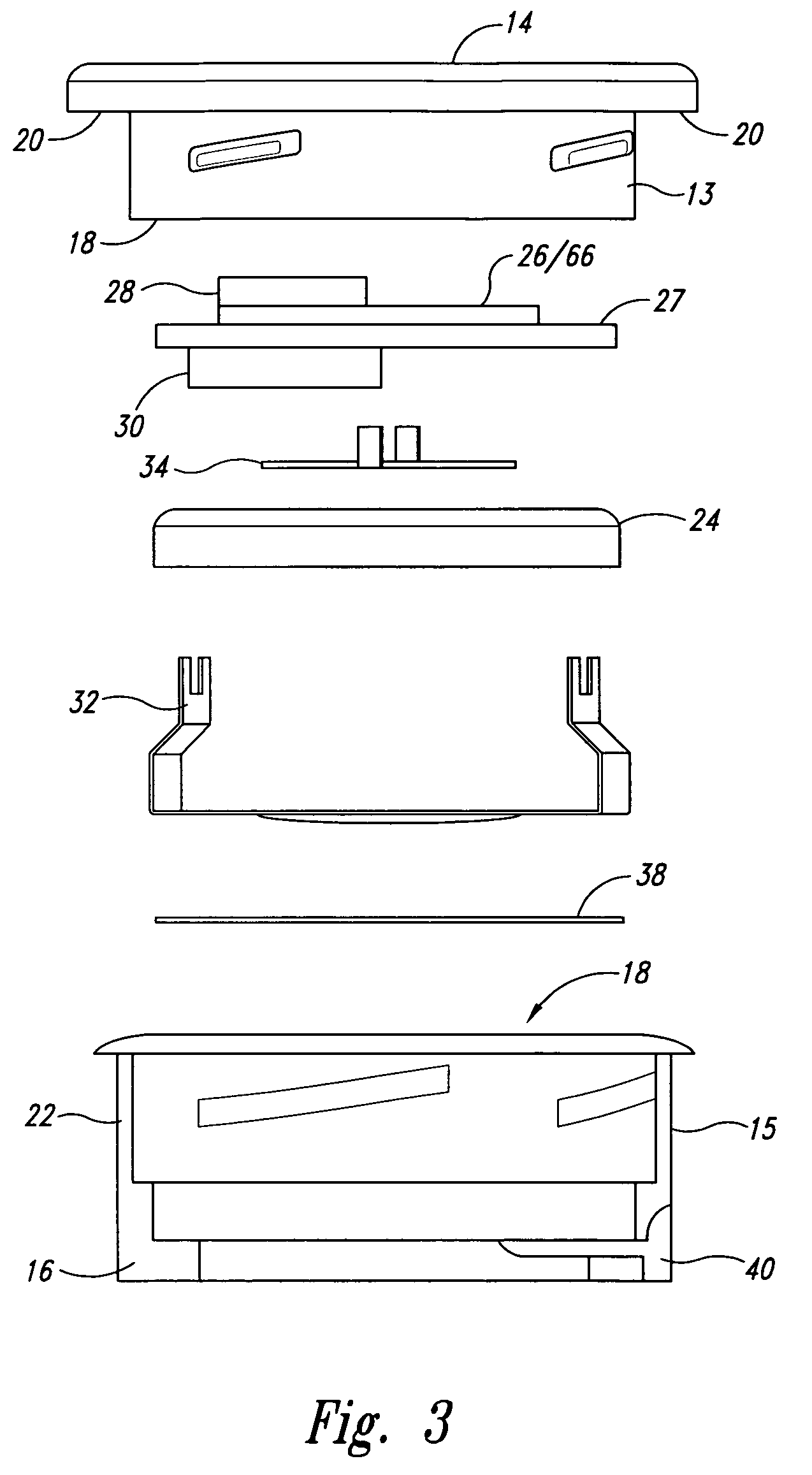Compact wireless sensor
a wireless sensor and wireless technology, applied in the direction of burglar alarm mechanical actuation, contact mechanism, instruments, etc., can solve the problems of voiding window/door manufacturer's warranties, voiding manufacturer's warranties, and unable to be easily seen by intruders, so as to achieve the effect of conserving battery power
- Summary
- Abstract
- Description
- Claims
- Application Information
AI Technical Summary
Benefits of technology
Problems solved by technology
Method used
Image
Examples
Embodiment Construction
[0033]The present invention is directed to a compact wireless sensor, and, particularly, for use in wireless security systems, such as the system disclosed in the afore-mentioned '048 patent application and which is incorporated herein by reference. In addition to being of size that fits within a standard window frame having a width of approximately ½ to 1 inch between an exterior wall and an interior wall, the sensor may have a long life span by being able to conserve power consumption through sampling the state of the sensor, as opposed to continuous monitoring.
[0034]The preferred embodiment of the compact wireless sensor 10 of the present invention is illustrated in FIGS. 1–4. The sensor 10 includes a compact housing 12 having an upper face 14 and a side wall 16 that defines a hollow interior 18. In preferred form, the housing 12 is a two-piece cylindrical member having an upper cap 13 that is aligned with a cylindrical body 15 although, alternatively, a one-piece cylindrical bod...
PUM
 Login to View More
Login to View More Abstract
Description
Claims
Application Information
 Login to View More
Login to View More - R&D
- Intellectual Property
- Life Sciences
- Materials
- Tech Scout
- Unparalleled Data Quality
- Higher Quality Content
- 60% Fewer Hallucinations
Browse by: Latest US Patents, China's latest patents, Technical Efficacy Thesaurus, Application Domain, Technology Topic, Popular Technical Reports.
© 2025 PatSnap. All rights reserved.Legal|Privacy policy|Modern Slavery Act Transparency Statement|Sitemap|About US| Contact US: help@patsnap.com



